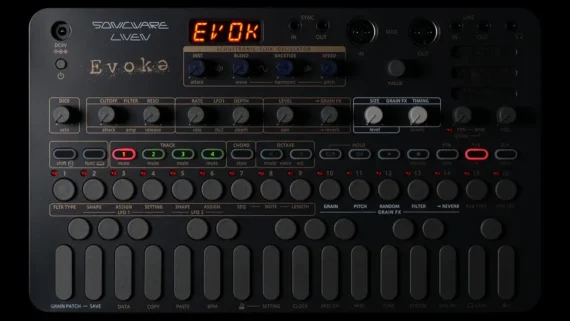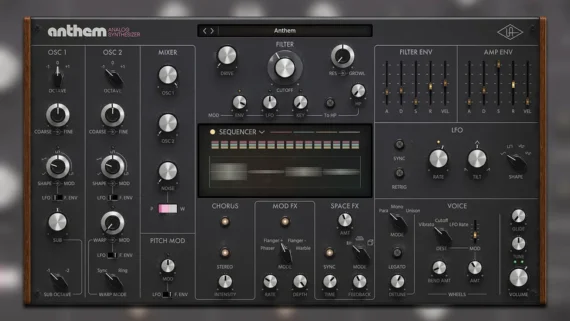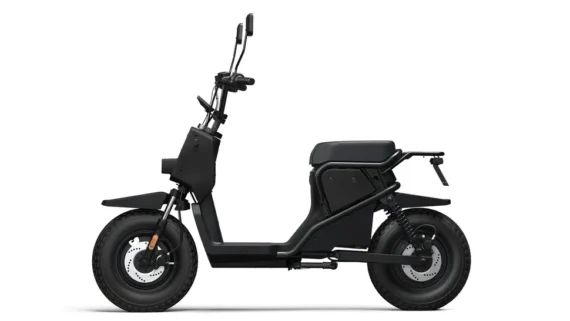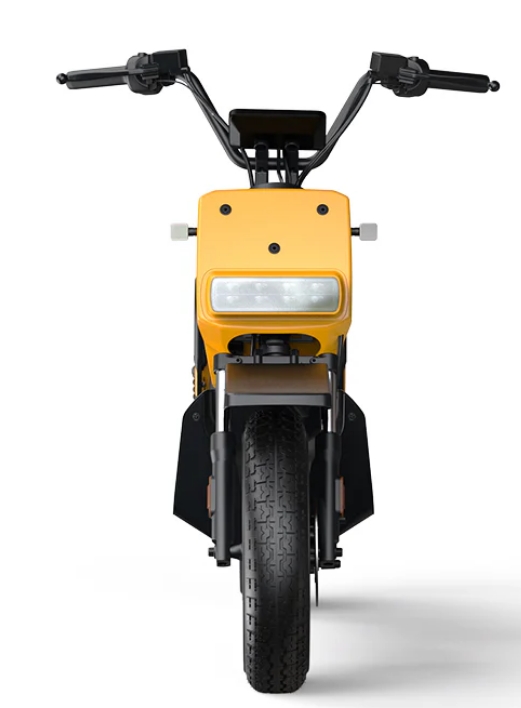Sonicware Intros LIVEN Evoke Acoustronic Synthesizer With Granular Effect

Sonicware’s LIVEN Evoke is a ‘nostalgia-evoking ambient music box’ fusing acoustic and electronic sounds.
Today, Japanese manufacturer Sonicware has introduced another instrument to its LIVEN series, a collection of affordable synths, drum machines and grooveboxes that includes the LIVEN Ambient Ø, LIVEN Texture Lab and LIVEN Lofi-12.
Described as a “nostalgia-evoking ambient music box”, LIVEN Evoke is a polyphonic synthesizer utilizing what Sonicware is calling “acoustronic” synthesis. Evoke’s Acoustronic Flux Oscillator blends acoustic and electronic elements together through a combination of sample-based and wavetable synthesis to create a diverse spectrum of sounds that the company says includes “nostalgic pianos, drone strings and bizarre vibraphones”.
Evoke’s sample engine is equipped with 34 acoustic instrument sounds, and patches are created by blending these with a noise generator and a wavetable oscillator armed with bank of 20 wavetables, with dynamic reversed movement applied through the synth’s Backtide Modulation system.
Multiple timbres can be layered across Evoke’s four tracks, each of which is equipped with its own amp envelope, two LFOs and a multimode filter with low-, high- and band-pass modes. The synth’s four-track sequencer stores up to 128 patterns, each of which can stretch up to 64 steps in length, and you’re able to adjust probability and record specific parameter settings for each step in a pattern. There’s also a multimode arpeggiator on board.
Effects include Evoke’s Grain FX, a granular engine that slices sound into minute grains, transforming and reconstructing these via a range of granular synthesis parameters, and a reverb with ten different algorithms. Effects can also be applied to external sources via the synth’s audio input.
Hardware-wise, Evoke is based on the same platform as several other instruments in the Liven series, with a 27-key keyboard and internal speaker on board. As for connectivity, you’ve got 3.5mm stereo line in/out, 5-pin DIN MIDI in/out, sync in/out on mini-jacks, and a 3.5mm headphone output. The synth can be powered via mains power or 6 AA batteries.
Sonicware LIVEN Evoke is priced at $239/£229 and ships June 30.
Find out more on Sonicware site.




